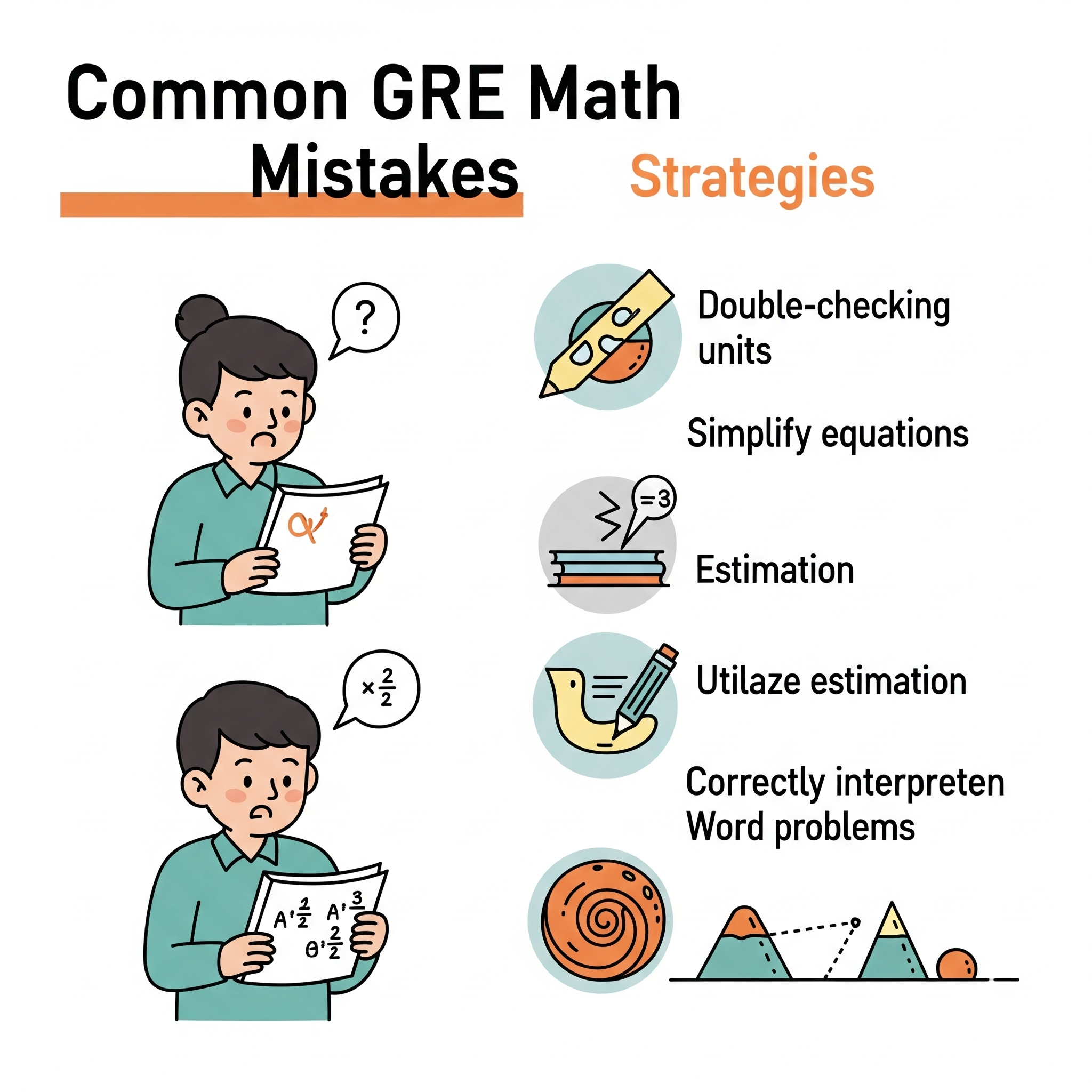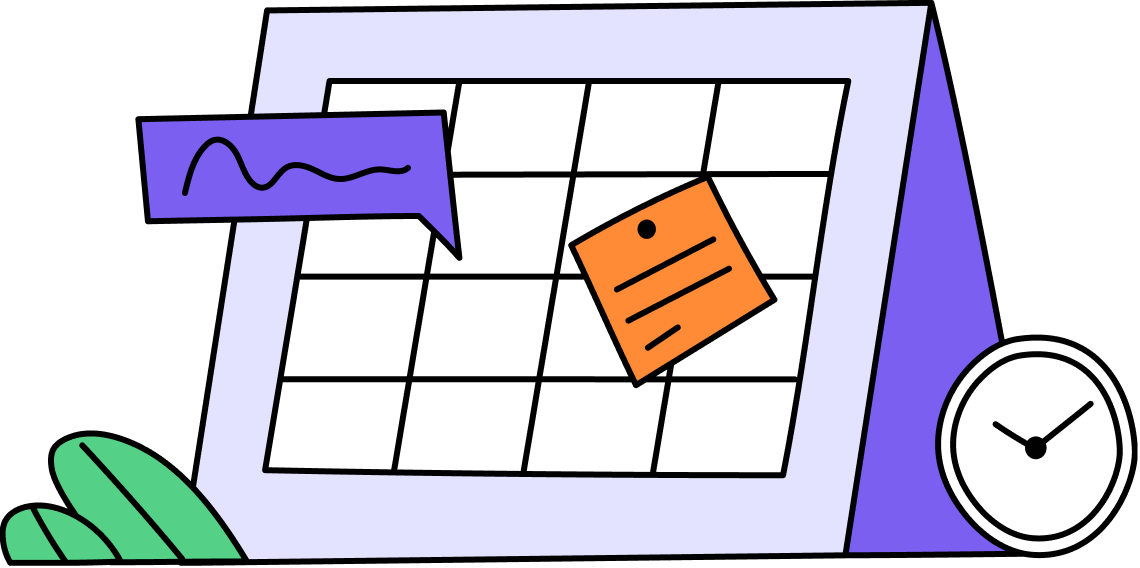The GRE Quantitative Reasoning section can be tricky, and even strong math students can make careless errors. Here are 10 common GRE math mistakes and how to avoid them:
1. Rushing Word Problems / Misinterpreting the Question:
- Mistake: Skimming through word problems and missing crucial details, or misinterpreting what the question is truly asking. This often leads to solving for the wrong variable or answering a slightly different question than intended.
- How to Avoid:
Slow Down and Read Carefully: Take your time to read the entire problem, at least twice.
Break Down the Problem: Identify the given information, what you need to find, and any constraints or conditions.
Translate to Math: Convert the words into mathematical equations or expressions. Pay attention to keywords like "of," "is," "percent more than," etc.
Re-read the Question: Before selecting an answer, re-read the original question to ensure your answer directly addresses what was asked.
2. Careless Calculation Errors (Arithmetic and Algebraic):
- Mistake: Simple errors in addition, subtraction, multiplication, division, or sign errors (especially with negatives). This can also include issues with order of operations (PEMDAS/BODMAS).
- How to Avoid:
Write Out Steps: Don't try to do too much mental math, especially for multi-step problems. Write down each step clearly on your scratchpad.
Double-Check Simple Operations: Quickly review your calculations, especially with negative numbers.
Use the Calculator Judiciously: The on-screen calculator is there for a reason, but don't over-rely on it for simple calculations that you can do faster mentally. Use it for complex calculations, large numbers, or to verify your mental math.
Practice Basic Math: Regularly practice fundamental arithmetic to build speed and accuracy.
3. Not Considering All Possible Cases (e.g., Integers vs. Fractions, Positive/Negative Numbers):
- Mistake: Assuming variables are positive integers when they could be negative, fractions, zero, or non-integers, especially in Quantitative Comparison questions. This can lead to different relationships between the quantities.
- How to Avoid:
Test Diverse Numbers: When plugging in numbers for variables, try a range: positive integers, negative integers, zero, fractions, and decimals, unless the question explicitly states otherwise.
Pay Attention to Constraints: Always note any conditions given for variables (e.g., x>0, y is an integer).
4. Misinterpreting Geometric Diagrams:
- Mistake: Assuming a diagram is drawn to scale, or assuming angles are 90 degrees or lines are parallel if not explicitly marked or stated.
- How to Avoid:
Assume "Not to Scale": The GRE explicitly states that diagrams are not necessarily drawn to scale. Do not rely on visual appearance for lengths or angles unless specified.
Look for Markings: Pay attention to perpendicularity symbols, parallel line arrows, and angle measurements.
Recall Geometric Theorems: Rely on known geometric facts and theorems (e.g., Pythagorean theorem, properties of triangles, circles, etc.) rather than visual estimation.
5. Ignoring Units or Unit Conversions:
- Mistake: Forgetting to include units in your answer or failing to convert units when necessary (e.g., converting minutes to hours, or inches to feet).
- How to Avoid:
Track Units: As you solve, write down the units for each value.
Check Answer Units: Ensure your final answer has the correct units as requested by the question.
Practice Conversions: Familiarize yourself with common unit conversions.
6. Poor Time Management:
- Mistake: Spending too much time on a single difficult question, leaving insufficient time for easier questions later in the section.
- How to Avoid:
Pace Yourself: Aim for roughly 1.5-2 minutes per question.
Don't Get Stuck: If you're struggling with a question for more than a couple of minutes, make an educated guess, mark it for review, and move on. You can come back to it if time permits.
Practice Under Timed Conditions: Regularly take full-length practice tests to improve your pacing.
7. Not Utilizing Answer Choices Effectively:
- Mistake: Always solving the problem directly without considering strategies like back-solving or estimation using the answer choices.
- How to Avoid:
Back-Solving: If the answer choices are numbers, try plugging them back into the problem, starting with the middle values (B or D) to eliminate options quickly.
Estimation: For questions asking for an approximate value or "closest to," estimate to eliminate clearly incorrect answers and narrow down your choices.
8. Forgetting Key Formulas or Concepts:
- Mistake: Not having fundamental math formulas (e.g., area, volume, distance = rate x time, probability) and concepts (e.g., prime numbers, properties of integers) memorized.
- How to Avoid:
Create a Formula Sheet: Make a cheat sheet of all essential GRE math formulas and review it regularly.
Targeted Practice: Focus on your weak areas and practice problems related to those specific concepts and formulas.
9. Errors in Data Interpretation:
- Mistake: Misreading charts, graphs, or tables, failing to understand the labels, units, or scale, or miscalculating percentages or ratios from the data.
- How to Avoid:
Examine the Data First: Before looking at the questions, take a moment to understand the titles, labels, units, and overall trends in any given chart or table.
Read Questions Carefully: Ensure you understand exactly what the question is asking in relation to the data.
Pay Attention to Scale and Increments: Misinterpreting the scale on an axis can lead to significant errors.
10. Not Reviewing Mistakes:
- Mistake: Simply looking at the correct answer after getting a problem wrong without understanding why you made the mistake.
- How to Avoid:
Error Log: Keep a detailed error log where you note down every question you get wrong, categorize the type of mistake (careless, conceptual, time management), and write down the correct solution and why your initial approach was wrong.
Analyze Your Errors: Understand the root cause of each mistake. Was it a lack of knowledge, a misinterpretation, or a calculation error?
Re-do Incorrect Problems: After some time, re-attempt the problems you got wrong to see if you've truly learned from your mistakes.
By being aware of these common pitfalls and actively implementing strategies to avoid them, you can significantly improve your GRE Quantitative Reasoning score.



